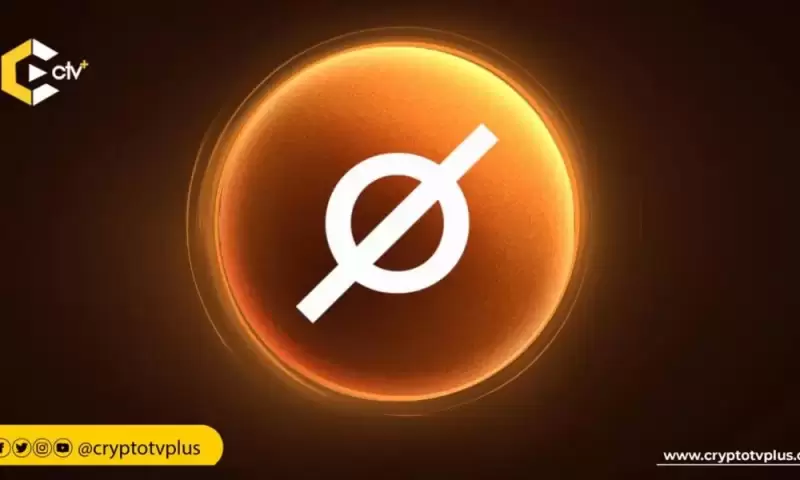 |
|
 |
|
 |
|
 |
|
 |
|
 |
|
 |
|
 |
|
 |
|
 |
|
 |
|
 |
|
 |
|
 |
|
 |
|
トークンノミクスは、ブロックチェーン プロジェクトの成功を推進するエンジンとしてよく取り上げられます。ユーザーと連携するインセンティブと構造を設計することによって

Tokenomics is often touted as the driving force behind successful blockchain projects. By aligning incentives and creating structures that benefit users, developers, and investors, tokenomics can be a powerful tool for growth and sustainability. However, as evidenced by the spectacular crashes of several cryptocurrency projects, not all tokenomics models are created equal.
トークンノミクスは、ブロックチェーン プロジェクトの成功の原動力としてよく宣伝されます。インセンティブを調整し、ユーザー、開発者、投資家に利益をもたらす構造を構築することにより、トークンノミクスは成長と持続可能性のための強力なツールとなり得ます。ただし、いくつかの暗号通貨プロジェクトの壮絶なクラッシュによって証明されているように、すべてのトークンノミクス モデルが同じように作成されているわけではありません。
From unsustainable incentives to liquidity crises, the failure of certain projects offers valuable lessons on what not to do. In this article, we'll delve into the key reasons why tokenomics models fail and explore how future projects can learn from these mistakes.
持続不可能なインセンティブから流動性危機に至るまで、特定のプロジェクトの失敗は、何をしてはいけないかについての貴重な教訓を提供します。この記事では、トークノミクス モデルが失敗する主な理由を詳しく掘り下げ、将来のプロジェクトがこれらの間違いからどのように学べるかを探っていきます。
The Perils of Unsustainable Incentives One of the most glaring causes of tokenomics failures is the use of unsustainable incentive structures. Early crypto projects often enticed participants with sky-high rewards for staking, mining, or providing liquidity, but these rewards came at a steep cost.
持続不可能なインセンティブの危険性 トークンノミクスの失敗の最も明白な原因の 1 つは、持続不可能なインセンティブ構造の使用です。初期の暗号プロジェクトでは、ステーキング、マイニング、または流動性の提供に対する高額な報酬で参加者を誘惑することがよくありましたが、これらの報酬には多額の費用がかかりました。
Take the example of Terra's UST and LUNA collapse in 2022. The system promised outsized returns through its Anchor Protocol, which offered a near-20% yield on stablecoin deposits. This led to an unsustainable influx of capital, and when market sentiment shifted, the entire ecosystem unraveled.
Terra の UST と LUNA が 2022 年に破綻した例を考えてみましょう。このシステムは、ステーブルコイン預金で 20% 近くの利回りを提供するアンカー プロトコルを通じて、莫大な利益を約束していました。これにより持続不可能な資本の流入が生じ、市場センチメントが変化するとエコシステム全体が崩壊しました。
Investors panicked as UST de-pegged from the dollar, triggering a death spiral that wiped out tens of billions in value. The problem here wasn't just the algorithmic nature of Terra's stablecoin—it was the fact that the tokenomics relied on constant growth to sustain rewards.
USTがドルとの連動を解除されると投資家はパニックに陥り、数百億ドルの価値が消滅する死のスパイラルを引き起こした。ここでの問題は、Terra のステーブルコインのアルゴリズムの性質だけではなく、トケノミクスが報酬を維持するために継続的な成長に依存しているという事実でした。
When the market couldn't meet those growth expectations, the incentive structure turned toxic. The lesson is clear: tokenomics models that hinge on unsustainable returns inevitably fail. Sustainable projects need to offer incentives that scale with real economic activity, not speculative mania.
市場がこうした成長期待に応えられないと、インセンティブ構造は有害なものに変わった。教訓は明らかです。持続不可能な収益に依存するトークノミクス モデルは必然的に失敗します。持続可能なプロジェクトは、投機的な狂信ではなく、実際の経済活動に応じたインセンティブを提供する必要があります。
Liquidity Black Holes Liquidity is the lifeblood of any token economy. Without sufficient liquidity, users can't easily buy or sell tokens, and prices become volatile. In some cases, tokenomics models have exacerbated liquidity issues by locking up too much of a project's supply in staking or vesting schedules, creating what I call "liquidity black holes."
流動性ブラックホール 流動性はあらゆるトークンエコノミーの生命線です。十分な流動性がないと、ユーザーはトークンを簡単に売買できず、価格が不安定になります。場合によっては、トークンノミクス モデルがプロジェクトの供給量をステーキングまたは権利確定スケジュールに過剰に閉じ込めることで流動性の問題を悪化させ、私が「流動性ブラック ホール」と呼ぶものを作り出しました。
One of the more notorious examples of this phenomenon is the Iron Finance collapse, which brought down prominent investor Mark Cuban. Iron Finance's partially collateralized stablecoin lost its peg when large withdrawals drained liquidity.
この現象の最も悪名高い例の 1 つは、著名な投資家マーク・キューバンを失脚させたアイアン・ファイナンスの破綻です。アイアン・ファイナンスの部分担保ステーブルコインは、多額の出金により流動性が枯渇したためペッグを失った。
The system's design forced it to mint more tokens to maintain the peg, flooding the market with supply and causing prices to plummet. What made this worse was that much of the project's token supply was locked in various protocols, preventing a healthy, liquid market response.
このシステムの設計により、ペッグを維持するためにより多くのトークンを鋳造する必要があり、市場に供給が殺到し、価格の急落を引き起こしました。これをさらに悪化させたのは、プロジェクトのトークン供給の多くがさまざまなプロトコルにロックされており、健全で流動的な市場の反応が妨げられていることです。
Tokenomics models must carefully balance token lockups with sufficient liquidity. While locking tokens can incentivize holding and stability, too much lockup can lead to illiquid markets, especially during periods of stress. Projects should aim for models that encourage liquidity provision, rather than restricting it.
トークンノミクス モデルは、トークンのロックアップと十分な流動性のバランスを慎重にとらなければなりません。トークンのロックは保有と安定性を促進する可能性がありますが、ロックアップが多すぎると、特にストレス期間中に市場の流動性が低下する可能性があります。プロジェクトは、流動性の提供を制限するのではなく、促進するモデルを目指す必要があります。
The Speculation Trap One of the most pervasive issues in failed tokenomics models is over-reliance on speculation. While speculation is a natural part of any market, tokenomics should be designed to reduce excessive speculation rather than fuel it.
投機の罠 失敗したトケノミクス モデルで最も蔓延している問題の 1 つは、投機への過度の依存です。投機はどの市場においても当然のことですが、トケノミクスは過剰な投機を煽るのではなく、抑制するように設計されるべきです。
Projects like BitConnect, a Ponzi scheme disguised as a cryptocurrency, were entirely built on speculation, promising users guaranteed returns through a "trading bot" that never existed. By the time regulators shut down BitConnect in 2018, billions of dollars had vanished.
暗号通貨を装ったポンジスキームである BitConnect のようなプロジェクトは完全に投機に基づいて構築されており、存在しなかった「取引ボット」を通じてユーザーに収益を保証すると約束していました。 2018年に規制当局がBitConnectを閉鎖するまでに、数十億ドルが消えた。
The problem here was that BitConnect's tokenomics were designed not to create real value, but to feed speculative fervor. The project's high returns attracted massive investments, but there was no underlying economic activity to back those returns.
ここでの問題は、BitConnect のトークンノミクスが実際の価値を生み出すことを目的として設計されているのではなく、投機的熱意を煽ることを目的として設計されていることです。このプロジェクトの高い収益は巨額の投資を引き付けましたが、その収益を裏付ける根本的な経済活動はありませんでした。
This "pump-and-dump" mentality is something we've seen in several other projects, from OneCoin to the short-lived hype around SafeMoon.
この「ポンプとダンプ」の考え方は、OneCoin から SafeMoon をめぐる短期間の誇大宣伝に至るまで、他のいくつかのプロジェクトで見られたものです。
To avoid the speculation trap, projects need to ensure that their tokenomics models are tied to actual utility and value creation, not just speculative price movements. Tokens should have clear use cases within the ecosystem—whether for governance, access to services, or payments—rather than existing solely as instruments for speculation.
投機の罠を避けるために、プロジェクトはトークンノミクス モデルが単なる投機的な価格変動ではなく、実際の効用と価値創造に結びついていることを確認する必要があります。トークンは単に投機のための手段として存在するのではなく、ガバナンス、サービスへのアクセス、支払いなど、エコシステム内で明確な使用例を持つ必要があります。
Over-Reliance on Algorithmic Stability Algorithmic stablecoins have long been an area of innovation, but they've also been a source of significant failure.
アルゴリズムの安定性への過度の依存 アルゴリズムのステーブルコインは長い間革新の分野でしたが、重大な失敗の原因でもありました。
Projects like Basis, which shut down in 2018, and Terra's UST in 2022, both attempted to create algorithmic mechanisms to maintain stability without sufficient collateral backing. The idea was that the protocol itself could adjust supply and demand to maintain a stable price.
2018年に閉鎖されたBasisや2022年にTerraのUSTなどのプロジェクトは、いずれも十分な担保なしで安定性を維持するためのアルゴリズムメカニズムを作成しようと試みた。このプロトコル自体が需要と供給を調整して、安定した価格を維持できるという考えでした。
However, these models often fail because they rely too heavily on market confidence and the assumption that demand for the token will remain high enough to support the algorithm. When confidence erodes, these systems are vulnerable to runs, as we saw with UST.
ただし、これらのモデルは、市場の信頼と、アルゴリズムをサポートするのに十分なトークンの需要が依然として高いという仮定に大きく依存しているため、失敗することがよくあります。 UST で見られたように、信頼が失われると、これらのシステムは実行に対して脆弱になります。
Once the peg breaks, it becomes nearly impossible to restore, as the system floods the market with supply, driving down the token's value further.
システムが市場に供給を溢れさせ、トークンの価値をさらに下げるため、ペッグが一度崩れると復元はほぼ不可能になります。
The lesson here is that algorithmic stability models are inherently fragile without sufficient collateral or external support mechanisms. While some projects, like MakerDAO's DAI, have successfully incorporated
ここでの教訓は、アルゴリズムの安定性モデルは、十分な担保や外部のサポート メカニズムがなければ本質的に脆弱であるということです。 MakerDAO の DAI のようないくつかのプロジェクトはうまく組み込んでいますが、
免責事項:info@kdj.com
提供される情報は取引に関するアドバイスではありません。 kdj.com は、この記事で提供される情報に基づいて行われた投資に対して一切の責任を負いません。暗号通貨は変動性が高いため、十分な調査を行った上で慎重に投資することを強くお勧めします。
このウェブサイトで使用されているコンテンツが著作権を侵害していると思われる場合は、直ちに当社 (info@kdj.com) までご連絡ください。速やかに削除させていただきます。
-

-

-

- 小さなエラーのあるまれな20pコインは、その額面230倍以上で販売されました
- 2025-04-12 09:10:14
- eBayのハンマーの下に、なんと49.04ポンドでeBayのハンマーの下に入りました。
-

- 暗号市場はトレンドだけではなく、タイミングに関するものです。
- 2025-04-12 09:10:14
- Qubetics($ TICS)は、この会話で最も話題になっている名前の1つになりました。
-

-

-

-

-





























































